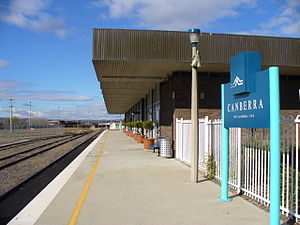
Professor Christopher J. Easton
B.Sc. Flinders University; Ph.D. D.Sc., University of Adelaide, FAA
Chris Easton is a graduate of Flinders University and the University of Adelaide. He held positions at Harvard University (1980-1981), the Research School of Chemistry (1982), the University of Canterbury (1983-1986) and the University of Adelaide (1986-1994), before his appointment as a Senior Fellow in the Research School of Chemistry, in 1995.
He was awarded a D.Sc. from the University of Adelaide in 1998 and is the recipient of the Royal Australian Chemical Institute Birch Medal for 2000, and the Archibald Oll? Prize for Chemical Literature for 2000. He was promoted to Professor at the Research School of Chemistry in 2001 and elected as a Fellow of the Australian Academy of Science in 2004.
Professor
PhD DSc (Adelaide), BSc (Flinders), FAA

Chris Easton is a graduate of Flinders University
and the University of Adelaide. He held positions at Harvard University
(1980-1981), the Research School of Chemistry (1982), the University of
Canterbury (1983-1986) and the University of Adelaide (1986-1994),
before his appointment as a Senior Fellow in the Research School of
Chemistry, in 1995.
He was awarded a D.Sc. from the University of Adelaide in 1998 and is the recipient of the Royal Australian Chemical Institute Birch Medal for 2000, and the Archibald Ollé Prize for Chemical Literature for 2000. He was promoted to Professor at the Research School of Chemistry in 2001 and elected as a Fellow of the Australian Academy of Science in 2004. He is also the Graduate Studies Convenor for Chemistry.
He was awarded a D.Sc. from the University of Adelaide in 1998 and is the recipient of the Royal Australian Chemical Institute Birch Medal for 2000, and the Archibald Ollé Prize for Chemical Literature for 2000. He was promoted to Professor at the Research School of Chemistry in 2001 and elected as a Fellow of the Australian Academy of Science in 2004. He is also the Graduate Studies Convenor for Chemistry.
Areas of expertise
- Organic Chemical Synthesis
- Physical Organic Chemistry
- Polymerisation Mechanisms
- Characterisation Of Biological Macromolecules
- Nanochemistry And Supramolecular Chemistry
- Industrial Chemistry
- Free Radical Chemistry
- Proteins And Peptides
- Separation Science
- Environmental Biotechnology
- Medicinal And Biomolecular Chemistry
- Organic Chemistry
- Theoretical And Computational Chemistry
- Nanotechnology
Publications
- Balotra, S, Newman, J, Cowieson, N et al 2015, 'X-ray structure of the amidase domain of AtzF, the allophanate hydrolase from the cyanuric acid-mineralizing multienzyme complex', Applied and Environmental Microbiology, vol. 81, no. 2, pp. 470-480.
- Fraser, S & Easton, C 2015, 'Biosynthetic incorporation of fluorinated amino acids into peptides and proteins', Australian Journal of Chemistry, vol. 68, no. 1, pp. 9-12.
- Amos, R, Chan, B, Easton, C et al 2015, 'Hydrogen-atom abstraction from a model amino acid: dependence on the attacking radical', Journal of Physical Chemistry B, vol. 119, no. 3, pp. 783-788.
- Alissandratos, A, Kim, H & Easton, C 2014, 'Formate production through carbon dioxide hydrogenation with recombinant whole cell biocatalysts', Bioresource Technology, vol. 164, pp. 7-11.
- Amos, R, Heinroth, F, Chan, B et al 2014, 'Hydrogen from formic acid through its selective disproportionation over sodium germanate - a non-transition-metal catalysis system', Angewandte Chemie International Edition, vol. 53, no. 42, pp. 11275-11279.
- CONT.........https://researchers.anu.edu.au/researchers/easton-cj
3-Methyl-1-oxa-2,7-diaza-7,10-ethanospiro[4.5]dec-2-ene (10a)
Data
10a ...............(960 mg, 82%) as a colorless oil.
1 H NMR (300 MHz) δ 1.38–2.10 (m, 4H), 1.97 (s, 3H), 2.40 (m, 1H), 2.68 (d, J = 17.2 Hz, 1H), 2.68–3.00 (m, 4H), 2.92 (d, J = 14.4 Hz, 1H), 3.05 (d, J = 17.2 Hz, 1H), 3.24 (d, J = 14.4 Hz, 1H).
13C NMR (75.4 MHz) δ 13.4, 21.2, 23.6, 30.8, 46.3, 46.6, 48.4, 63.1, 85.3, 154.4.
IR (thin film) υmax 2948, 2874, 1630, 1457, 1434, 1388, 1332, 1219, 1072, 1050, 1038, 982, 897, 800, 688, 630 cm–1.
LRMS (EI) m/z (%) 180 (M+•, 0.8), 167 (6), 149 (21), 139 (63), 124 (7), 111 (3), 96 (100), 82 (43), 69 (49), 55 (44).
HRMS (EI) Found m/z 180.1264 (M+•). C10H16N2O requires m/z 180.1263.
Synthesis of spiroisoxazolines through cycloadditions of nitrile oxides with 3-methylenequinuclidine (JC-1605EP)
Connie K. Y. Lee, Christopher J. Easton, G. Paul Savage and Gregory W. Simpson
Full Text: PDF (289K)
pp. 175 - 183
Synthesis of spiroisoxazolines through cycloadditions of nitrile oxides with 3-methylenequinuclidine
Connie K. Y. Lee,a Christopher J. Easton,*a G. Paul Savage,b and Gregory W. Simpsonb
a Research School of Chemistry, Australian National University, Canberra ACT 0200, Australia,
and b CSIRO Molecular and Health Technologies, Bayview Ave, Clayton VIC 3168, Australia
E-mail: easton@rsc.anu.edu.au
http://www.arkat-usa.org/arkivoc-journal/browse-arkivoc/2006/3/graphical-abstracts/
http://www.arkat-usa.org/get-file/20010/
This paper is dedicated to Professor James M. Coxon (Jim) on the occasion of his 65th birthday, and in recognition of his many contributions to chemistry
 Canberra Civic viewed from Mount Ainslie with Lake Burley Griffin and Mount Stromlo in the background.
Canberra Civic viewed from Mount Ainslie with Lake Burley Griffin and Mount Stromlo in the background.
CANBERRA STREET FOOD

 RAIL STATION
RAIL STATION
 DRUG APPROVALS BY DR ANTHONY MELVIN CRASTO .....FOR BLOG HOME CLICK HERE
DRUG APPROVALS BY DR ANTHONY MELVIN CRASTO .....FOR BLOG HOME CLICK HERE
 DRUG APPROVALS BY DR ANTHONY MELVIN CRASTO .....FOR BLOG HOME CLICK HERE
DRUG APPROVALS BY DR ANTHONY MELVIN CRASTO .....FOR BLOG HOME CLICK HERE

No comments:
Post a Comment